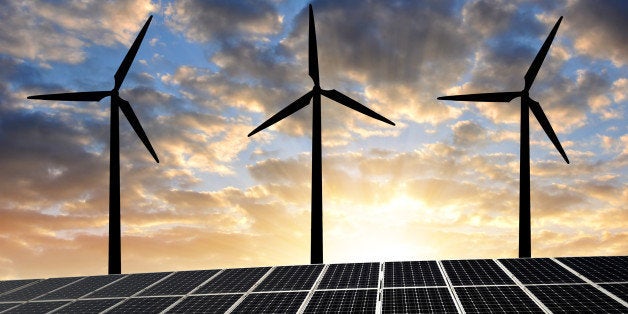
As noted in part one of this topic (6 Facts About the Impending Renewable Energy Revolution), solar and other renewables have become more and more competitive with traditional ways of generating electricity. And these cost advantages can be easily translated to the customer level. Now you can use these technologies to take control of your own electric supply, regardless of what your local electric distribution company does.
As previously mentioned, I am a former senior policy official at the Department of Energy and Deputy Manager of Power at the Tennessee Valley Authority and I spent the better part of three decades flying 4 million miles on United as I developed a startup global electric power and distribution company into a company with $18 billion a year in annual revenue and power plants now in 21 countries.
That being said, here are 5 reasons why utility companies hate renewables:
1.Bigger used to be better. Utilities have thrived over the last sixty five years by building bigger and bigger power plants, based on the reasonable principle that there are economies of scale in bigness, and fuel costs were trivial. You couldn't build a power plant in your back yard at any reasonable cost, never mind how mad your neighbors would be. But all of that has changed. Solar especially is a technology where scale doesn't matter, or at least it doesn't matter nearly as much as in other technologies. Photovoltaic panels are small, stand alone power plants that can be installed anywhere that there's enough sun to make them effective. Small wind machines are also moving down the cost curve, although they have more challenges for installation at the residential level.
2.It's cheaper to run wind and solar plants than it is to run traditional sources of generation, even at the residential level. The absence of fuel costs is obvious, but the operating and maintenance requirements are much lower as well. You can put a small natural gas fired generating set in your basement, but you'll need engineering and maintenance and careful attention to ventilation, and other complications. Solar panels on your roof have no such requirement, and this is a very attractive feature.
3.The solar industry has matured. There are lots of solar installers around to offer their services. This is no longer an experimental technology, or one only for the environmental nuts, or something you do just to impress your neighbors. It's here, it works, and it's getting cheaper and cheaper. The same cannot be said for the electricity from your local supplier.
4.You are pretty likely to save money if you make your own power. The price your utility charges you for energy is always complicated, and not more than two or three customers out of a hundred understand their applicable "rate schedule." Before the Arabs started the energy crisis and the Mideast became an unending headache, your kilowatt-hour price came down per unit as you used more electricity--think volume discount. This mimicked the utilities' costs. But that cost structure hasn't been true for a long time, and rates have been adjusted so that you pay MORE per unit as your consumption goes up. In San Diego, for example, there are four price levels, from 17, 20, 37 and 39 cents, which increase as more electricity is used. This clearly encourages customers to use less rather than more.
5.All this creates a real night mare for the industry. Utilities fundamentally are in business to sell electricity. Having pricing that discourages consumption of your only product is bad enough. Now having a technology that is available and attractive to customers, and that results in them making their own power, and even selling the excess back to you at preferential rates, is a real threat to the franchise.
What makes this even more troublesome is that the utility has high fixed costs that must be paid, even if the production of electricity drops -- it's all that expensive capital sitting there that converts the coal or gas or uranium into electricity. If you buy a new car and finance it with a loan, you still have to pay back the loan even if you only drive the car two miles a week. The fewer kilowatt hours the utility sells, the higher the rates have to be to recover these intractable costs. Which in turn makes installing solar panels even a better proposition. This potential dynamic has justly been called the "death spiral."
There is one very dark cloud on the horizon: You will save money by putting solar on your roof if your utility is already charging high rates, or by creating a local non-profit to take the place of the utility and purchase only renewable power. In places like California and Hawaii rates are already over twenty cents per Kwh in some tiers for many customers. The system in these places has reached what is called "grid parity"--you can make your own power at a price that is competitive with what the grid offers you.
But you may not keep on saving from your rooftop solar panels. As long as you are connected to a utility, it is available to provide backup power. This service, and the power lines that deliver it, costs the utility money, so many are now looking at changing the way they charge for electricity, including adding a charge that you would pay even if you used no electricity from the utility that month. So you will need to stay alert, but any change like this will be subject to a great deal of political opposition and will not happen quickly.
And in the meantime you can enjoy the significant economic advantages of being your own electric utility. Reddy Kilowatt may be unhappy, but so what?
Look for me to explain in more detail in my next article: 4 Ways Smart Utility Can Join the Renewable Revolution Rather than Opposing it and Ending Up as Road Kill.
RF Hemphill is a former CEO of a multi-billion dollar global electric power and distribution company and is the author of Dust Tea, Dingoes & Dragons: Adventures in Culture, Cuisine & Commerce from a Globe-Trekking Executive.
